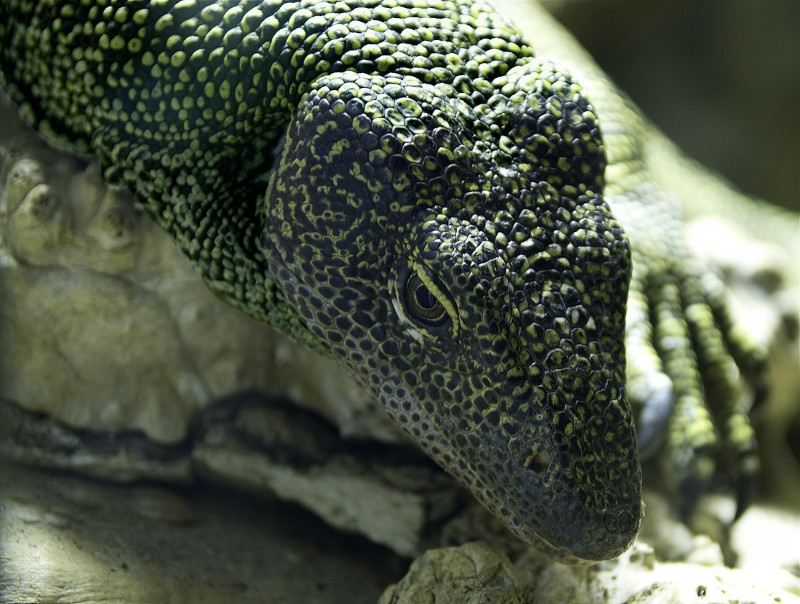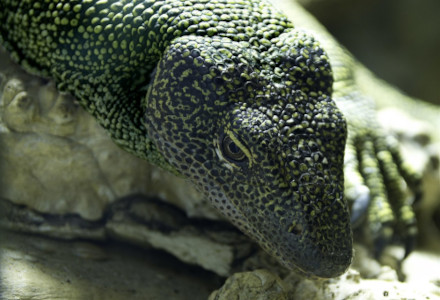
Mangrove Monitor Facts
- This majestic creation of Nature is most frequently known by the descriptive common name of the Mangrove Monitor. It also has a few other, less often used titles. Those include such terms as the mangrove goanna and Western Pacific monitor lizard.
- Scientific professionals, however, tend to refer to the creature by its official moniker. Thankfully, that’s a comparatively simple name for the layperson to pronounce. That’s because this remarkable reptile holds the formal name of Varanus indicus.
- The noted French zoologist, François Marie Daudin, holds the distinction of being the first person to formally acknowledge it as a separate and distinct species, in 1802. He, however, gave it a different name. It first bore the title Tupinambis indicus.
- Later research changed that to the moniker applied today. This took time, though, due to ongoing research and new insights into its place in evolution. The intriguing lizard eventually acquired the appellation it holds now roughly 100 years later.
- No matter what one calls it, the Mangrove Monitor seems to be maintaining a population base that’s both sufficient and stable. That pleasant trend also appears to hold true throughout the entirety of its range. The IUCN thus lists it as Least Concern.
- It nevertheless does faces some potential threats to its continued existence as a species. Most of these stem from the actions of humans. In some regions, it’s actively hunted for its flesh and skin. Its greatest peril, however, likely comes from climate change.
Related Articles
Mangrove Monitor Physical Description
The magnificent Mangrove Monitor easily merits the admiration and appreciation of those who encounter it. Its visual appeal certainly plays a factor in that, of course. Yet, its sheer physical dimensions also help the reptile to acquire that same degree of notice.
That’s true since the reptile achieves some very respectable measurements. One gender of the intriguing species especially does so. That’s true since the fascinating animal displays a strong degree of the physiological characteristic known as sexual dimorphism.
In its case, this trait manifests itself in terms of pure physical size. More specifically, males attain a significantly greater size than their female counterparts. This situation commonly occurs among its kindred, but few display the principl to quite this degree.
Mature males of the lizard grow to lengths equaling between 3.5 – 4 ft (1.1 – 1.2 m). It must be noted, however, that the majority of that’s tail, which usually measures almost twice the length of the body! Males also reach weights of as much as 4.2 lb (1.9 kg).
Females of the Mangrove Monitor reach much shorter lengths, though. They also evolved as slimmer in body shape. These tend to be only around half the length of their counterparts. Being less stocky than males, they generally only weigh around 1.1 lb (0.5 kg).
It also displays an interesting coloring. Both genders show either a black or dark green background onthe upper part of the body. The stomach, though, tends to be a cream color, without markings. Golden-yellow spots on a lighter background show on the top of the head.
- Kingdom: Animalia
- Phylum: Chordata
- Class: Reptilia
- Order: Squamata
- Family: Varanidae
- Genus: Varanus
- Species: V. indicus
Mangrove Monitor Distribution, Habitat, and Ecology
The gorgeous Mangrove Monitor evolved as native to a reasonably large region of the world. The general area, though, likely won’t surprise many people. That’s true since it developed as endemic to a range that occurs entirely in the Southern Hemisphere, south of Asia.
More precisely, its known native zone of habitation for the amazing species extends from northern Australia and New Guinea to the Solomon Islands. Within that territory, it appears in scattered regions. That’s partly because it lives on literally hundreds of islands.
Within that broad range, though, it displays decided preference in its choice of habitat. Its very name supplies a clear indication of the nature of those preferences, to be certain. As evidenced by that title, it mainly lives in regions comprising dense mangrove forests.
Yet this marvel of Nature also lives in other, very similar locations within its range. These include areas of damp forests close to coastal rivers, and even permanent inland lakes. It’s one of only two known varieties of monitor lizard capable of surviving in such a habitat.
The Mangrove Monitor achieves that due to its having salt-excreting nasal glands. These allow it to survive there, and even consume marine prey. It thus feeds opportunistically, and as a pure carnivore. It consumes such prey as insects, rodents, crustaceans, among others.
Males fight fiercely for females during mating season. Following mating, though, the female lays 2 – 12 eggs that hatch in seven to eight months. In captivity, the remarkable creature lives for up to 20 years. Currently, though, its lifespan in the wild remains undetermined.
Species Sharing Its Range
Check out our other articles on 5 Beautiful North American Birds, Desert Willow, Mount Vesuvius, Southern Darwin’s Frog, Zebra Spider, Eastern Gray Squirrel, Shoebill

